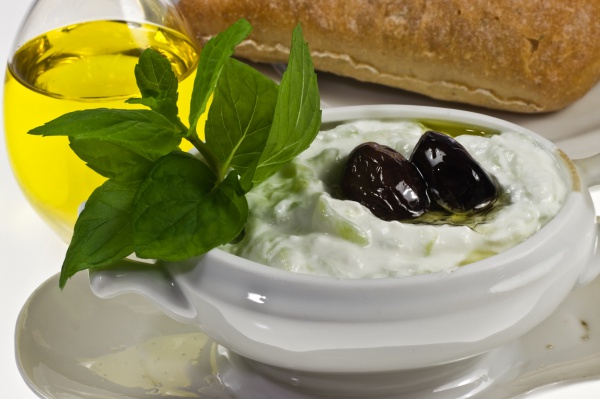Facts About Tzatziki
Tzatziki, also known as cacık or tarator, is a versatile and flavorful dish originating from Southeast Europe and the Middle East. Whether served as a dip, soup, or sauce, it typically features strained or diluted yogurt mixed with cucumbers, garlic, salt, olive oil, and a variety of herbs such as dill, mint, parsley, and thyme. This dish is usually enjoyed cold, making it an ideal appetizer or side dish.
The origins of tarator can be traced back to the medieval Ottoman Empire, where it initially referred to a dish made with ground walnuts and vinegar. Over the years, different regions have put their own twist on tarator, incorporating ingredients such as tahini, yogurt, cucumbers, and walnuts. Today, it is a staple in meze spreads across many cultures.
The word "tzatziki" derives from the Modern Greek "τζατζίκι" borrowed from the Turkish word "cacık." The exact origin of the term is somewhat unclear, with some suggesting a connection to an Armenian word or other West Asian languages. "Tarator" on the other hand, has Slavic roots and is commonly used in languages from the Balkans to the Levant.
Tzatziki has many regional variations. In Greece, it is a popular meze served with bread, eggplant, or zucchini, made with strained yogurt, cucumbers, garlic, olive oil, and herbs. In Turkey, cacık is prepared with yogurt, garlic, water, and various vegetables and herbs, sometimes served as a cold soup. In the Balkans, tarator is often enjoyed as a cold soup or side dish, featuring yogurt, cucumbers, garlic, walnuts, and dill.
In Cyprus, the dish is known as "talattouri" and is typically used as a dipping sauce. In the Middle East, similar dishes go by different names and are often served as meze. You will also find similar dishes such as ovdukh in the Caucasus Mountains and raita in South Asia.

 United Kingdom
United Kingdom